Navegación principal versión móvil


Inflammatory Essays, 1979-1982
Convinced that art resides in the concepts it sets out to communicate and not the form of the artistic object, Jenny Holzer has turned language into her creative material. Her first incursions into this field were her famous Truisms . Under this name, in 1977 Holzer began to hang posters in the streets of SoHo and other parts of Manhattan with incisive messages on social contradictions, sexuality, violence and the abusive logic of power. Arranged in alphabetic order and in black capital letters on a white background, she uses them ‘to keep people awake’ , as the artist explains in an interview.
Over the years Holzer developed longer texts, such as the Inflammatory Essays (1979–82), a series of texts of one hundred words each, written in a more caustic and aggressive language than the earlier work. Printed on coloured paper, they create a very visual discursive mosaic. As the title suggests, they are ‘inflammatory essays’ on intolerance, violence, rampant consumerism, the relations between the sexes and the abusive use of power. The artist uses texts by political thinkers in the communist and anarchist tradition (Lenin, Leon Trotsky, Rosa Luxemburg, Mao Zedong, Karl Marx, Friedrich Engels and Emma Goldman), but also texts by religious and liberal thinkers, or from popular literature. Besides their message, Holzer’s works are deeply poetic and have great powers of suggestion.
The first Inflammatory Essays were published in 1979 in a book entitled Black Book Posters . The texts were printed on green paper. Later Holzer edited the Inflammatory Essays in a poster format and hung them in the streets of Manhattan, selecting each location according to the nature of each specific message. Every week she hung new posters, printed in different colours each time, so passers-by would know they had been changed. These were signed posters covering the entire length of a wall in the manner of wallpaper and denouncing all forms of abuse (‘The most exquisite pleasure is domination. Nothing can compare with the feeling’), whether social (‘People must pay for what they hold, for what they steal. You have lived off the fat of the land. Now you are the pig who is ready for slaughter’), or psychological (‘Fear is the most elegant weapon. Your hands are never messy’). With her battery of meanings and forceful yet suggestive tone, Holzer’s flaming essays configure a cartography of meanings on contemporary contradictions. ‘Change is the basis of all history. The proof of vigor. […] “Nothing essential changes.” That is a myth. It will be refuted.’
Technical details
The MACBA Collection features Catalan, Spanish and international art and, although it includes works from the 1920s onwards, its primary focus is on the period between the 1960s and the present.
For more information on the work or the artist, please consult MACBA's Library. To request a loan of the work, please write to colleccio [at] macba.cat .
If you need a high resolution image of the work, you must submit an image loan request .
Seattle Art Museum Connecting Art to Life One Blog Post at a Time
Object of the Week: Inflammatory Essays
Originally plastered around New York City without attribution in the late 1970s and early 80s, Jenny Holzer’s Inflammatory Essays were made to confront passersby. Though she was relatively unknown at the time, Holzer’s careful combination of poetics and politics soon drew international attention and acclaim. In 1990, she became the first woman to officially represent the United States at the Venice Biennale, and was awarded the Golden Lion—the Biennale’s top prize. Just six years prior, Seattle Art Museum’s Contemporary Art Council sponsored the installation of Essays along a wall at Second Avenue and Pike Street in 1984. The posters would resurface 16 years later at SAM as part of the 2001 exhibition, Art of Protest .
Each essay, comprising 100 words and neatly arranged in 20 lines, is laden with conflicting views. As Leah Pires recently wrote in Art in America , “The concision and conviction of the language invites easy agreement—a feeling that is quickly complicated by the contradictions that become apparent when the statements are read together.” The commercial history of offset printing, coupled with Holzer’s typographic choices (the essays’ typeface is reminiscent of billboard advertisements), suggests a mass-distributed message in an aggressively declarative tone. The first line in one essay reads: “FEAR IS THE MOST ELEGANT WEAPON, YOUR HANDS ARE NEVER MESSY.”
These texts do not mirror Holzer’s own sentiments, but are rather drawn from the writings of anarchists, dictators, and revolutionaries around the world. Such voices include Emma Goldman, Adolf Hitler, Vladimir Lenin, Mao Tse-tung, and Leon Trotsky. Whether directly stated or implied through irony, Inflammatory Essays critiques power and control, sex and abuse—themes that continue to inform Holzer’s practice today. Her work is meant to provoke, but Holzer is well aware of the weight words carry. In a 2016 interview with Even Magazine , she says, “Later I found it necessary and proper at times to be careful…I’ll put tough stuff out, but not what might incite gratuitous, hideous violence. I’m pro-expression but not pro-murder…I think it is utterly irresponsible and reprehensible…to incite violence in a political campaign, or anywhere else. One should not do it. We are a murderous species. We don’t need encouragement. Once we get rolling, it’s hard to stop.”
Produced 40 years ago, Inflammatory Essays feels eerily contemporary. In a polarized era marred by fake news, the quick dismissal of credible journalism, and our self-imposed curation of media, Holzer urges us to question the statements we are bombarded with on a daily basis. Through their challenging and, at times, aggressive statements, Inflammatory Essays continues to elicit critical public discourse by means of self-examination.
– Rachel Hsu, SAM Exhibitions Coordinator
Images: Inflammatory Essays , 1979-82, Jenny Holzer, offset posters on paper 17 x 16 3/4 in., Gift of the Contemporary Art Council of the Seattle Art Museum, 2012.9.20 © Artist or Artist’s Estate. Poster Project, Seattle, Washington, USA, 1984, © 1984 Jenny Holzer, member Artists Rights Society (ARS), NY. Installation view Art of Protest , Seattle Art Museum, 2001, photo: Nathaniel Wilson. Inflammatory Essays , 1979-82, Jenny Holzer, offset posters on paper 17 x 16 3/4 in., Gift of the Contemporary Art Council of the Seattle Art Museum, 2012.9.16 © Artist or Artist’s Estate. Inflammatory Essays , 1979-82, Jenny Holzer, offset posters on paper 17 x 16 3/4 in., Gift of the Contemporary Art Council of the Seattle Art Museum, 2012.9.21 © Artist or Artist’s Estate.
- Category: read
- Tag: Adolf Hitler , Art of Protest , Emma Goldman , Jenny Holzer , Leon Trotsky , Mao Tse-tung , object of the week , Venice Biennale , Vladimir Lenin
Why Jenny Holzer’s Inflammatory Essays matter
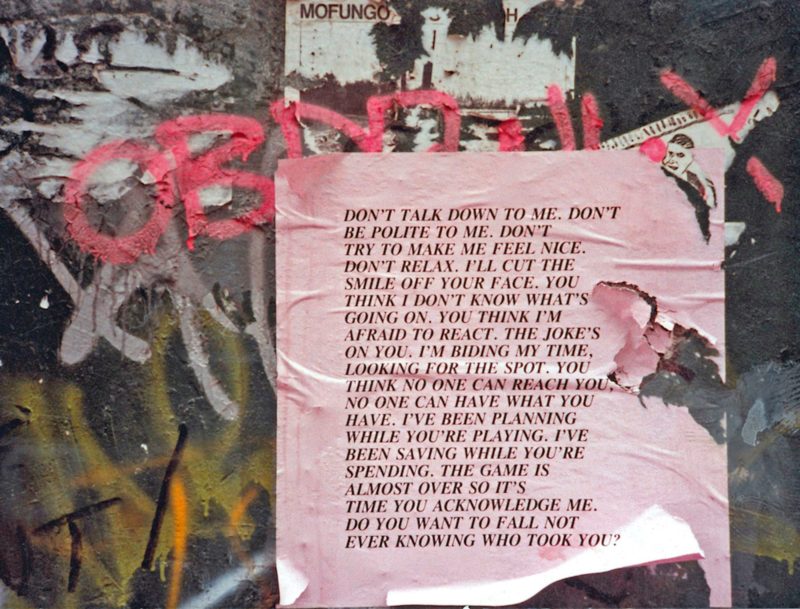
The American artist and political activist, Jenny Holzer has racked up a reputation for herself for her Inflammatory Essays over the years. From 1977 to 1982, her text-based Inflammatory Essays were typically displayed for the public in the formula of simply worded statements printed in bold. As a result of her contribution to the artwork, her work has been presented countless times in different exhibitions and retrospectives all over the globe.
Inspiration
Holzer was not always known for her Inflammatory Essays . She did not start specializing in text as the foundation of her work until much later. Originally, she started her career as an abstract artist that was inspired greatly by the principles of abstract expressionism. Although she was fairly successful in this area, Holzer was always on the lookout for a more modern way to communicate the fast-paced contemporary culture that was on the rise during the late 1970s and 1980s.
Inflammatory Essays
Like numerous artists of her time, Holzer relied on mass media and advertising strategies to fuel her work. During the late 1970s, she came up with almost 300 honest principles, observations, and slogans based on commonly accepted truths and clichés. Initially, Holzer would distribute these slogans to the public through various media such as posters, stickers, and t-shirts before she later progressed to electronic displays.
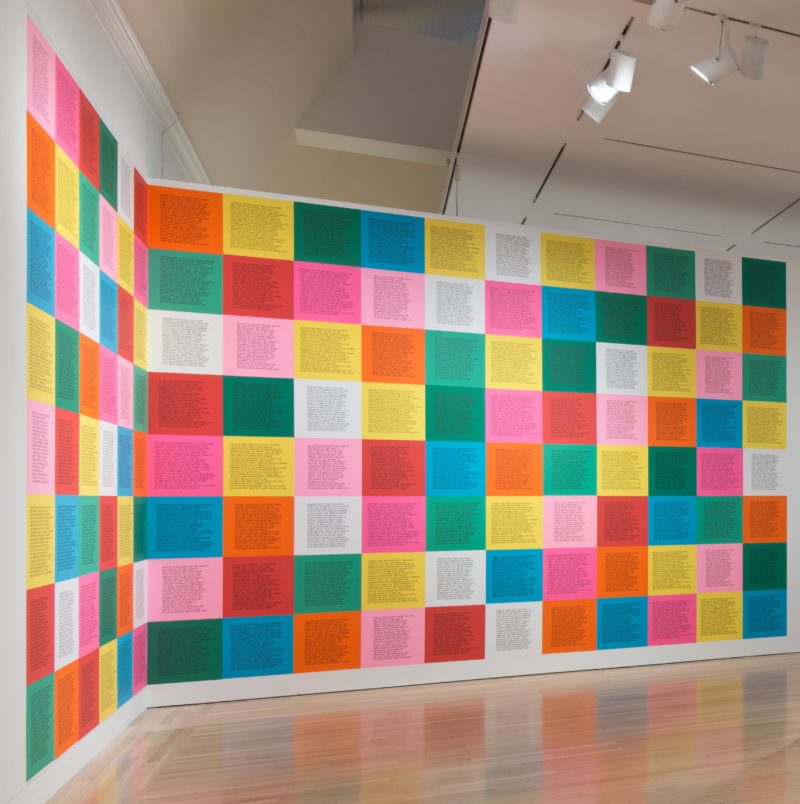
The reaction of the public
Motivated by the need to include discernible content in her work rather than abstract content, Holzer started placing words in her pieces, typically in the form of scraps of newspapers, as well as book and magazine clippings. Before she started displaying her work on a massive scale, she would first test the effects of her essays on regular passers-by. She quickly realized that her work had the power to engage the public, even when the public did not have any intention of seeing it, moving them to think seriously and provoking them to start debates about certain issues. It was this profound realization that encouraged her to keep pursuing her work.
Jenny Holzer’s work on New York’s Times Square
In 1982, Holzer took her messages a step further by infiltrating them to the public via a massive advertising stunt in New York’s Times Square . The messages displayed by Holzer were varied to include an array of themes and topics, but generally, all the messages presented contradictory perspectives. Holzer did this with the hope of awakening the public to the truth to sharpen their awareness.
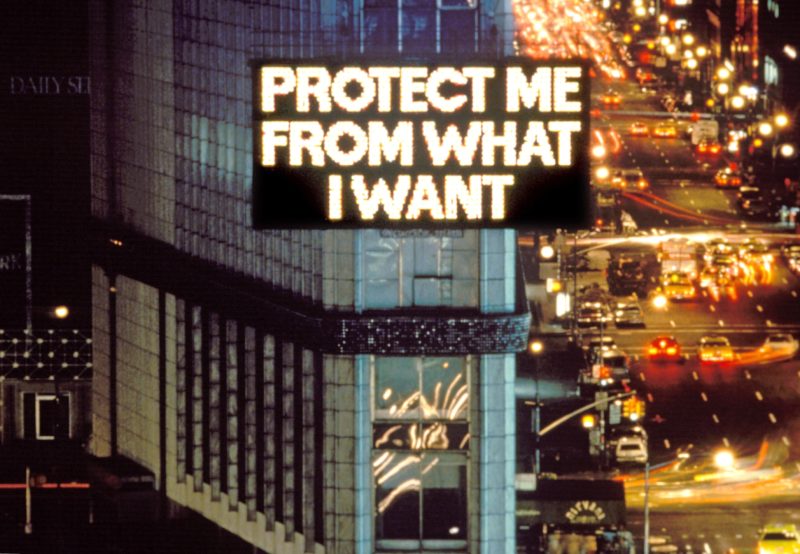
Artwork description and composition
As she was finalizing her year as an MFA student at the Rhode Island School of Design, Holzer restructured her formula. Instead of simply relying on newspaper and book clippings, she sought to include her own words and opinions in her work. She started by creating a series of one-liners intended to cleanse common truths experienced on a regular basis in contemporary western society.
She then assembled the series of one-liners into several posters. Among some of the statements she came up with include ‘ abuse of power comes as no surprise ’, “ money makes taste , “ protect me from what I want , ‘People look like they are dancing before they love’ and more, all of which she referred to as truisms .
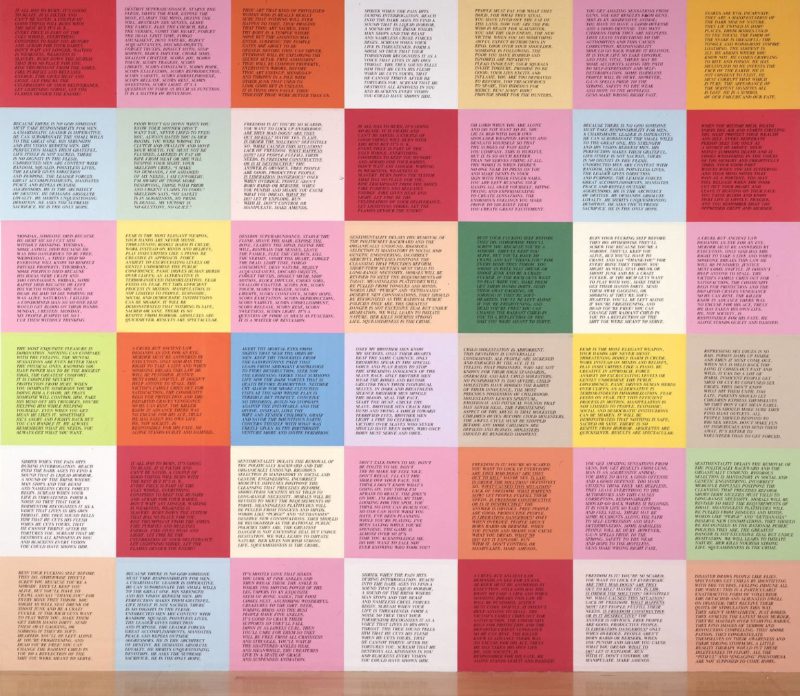
From 1977 to 1987, Holzer pasted other photocopies around New York. Her Truisms series look quite similar to the Inflammatory Essays . When both series started to become commonplace and too expected, she started working on several political installations that she also printed on posters using capital letters. She allotted each Inflammatory Essay a paragraph for each poster with the hope of delving into more complex and controversial issues in society. Rather than refer to these political statements as truisms, Holzer opted to refer to them as Inflammatory Essays .
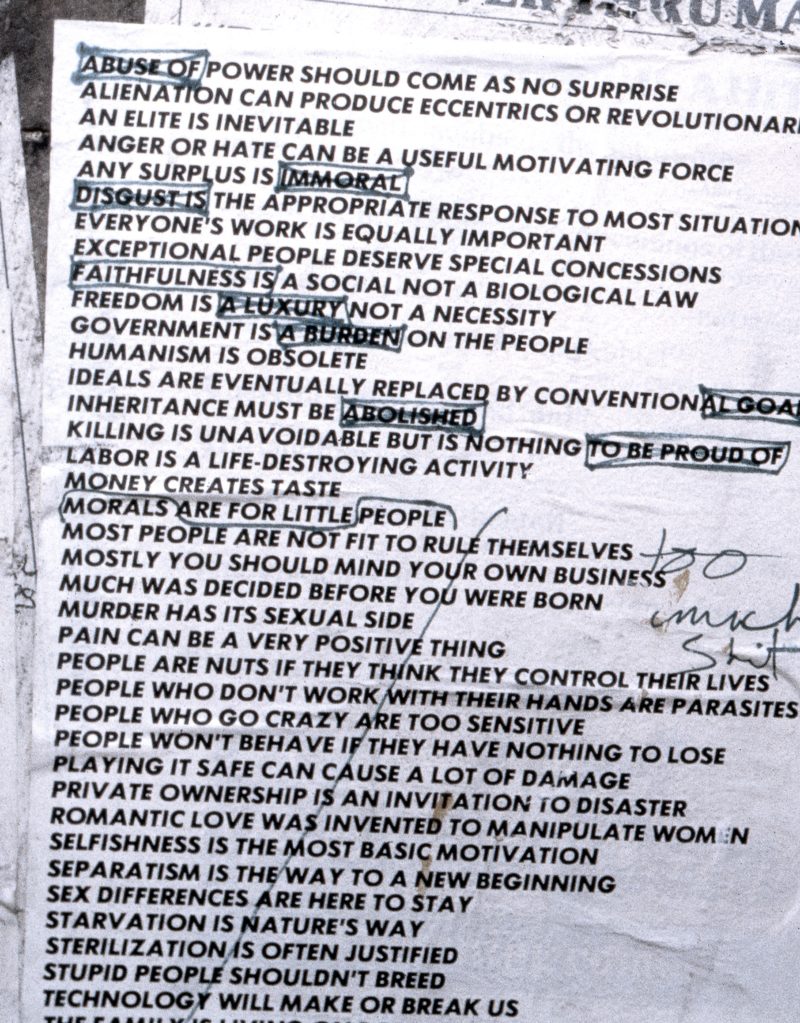
Holzer’s works have been displayed in various locations worldwide, and they have been translated into different languages. Later on, she began incorporating technology into her installations, using LED signs to display her texts in motion. The LED signs lent a sense of authority that was usually missing in her posters. Since then, she has continued to work on light-based installations utilizing surfaces of popular buildings as the canvas onto which her Inflammatory Essays and truisms are displayed.
Although some of Holzer’s work is displayed outdoors, some of her work is also viewed in art spaces. Even in these spaces, she takes the time to construct complex interactions allowing the museum to enjoy the works that are often comparing different mediums.
Whether she opts to display her truisms and essays via text or through technology-driven visual expression, her work has allowed her to express her opinions on modern culture. Relying on lighted signs, billboards , walls and so on, Holzer uses areas of public interest as the canvas of her work. Her works and essays are created to provoke a reaction from the public so that relevant debates and conversations can be discussed.
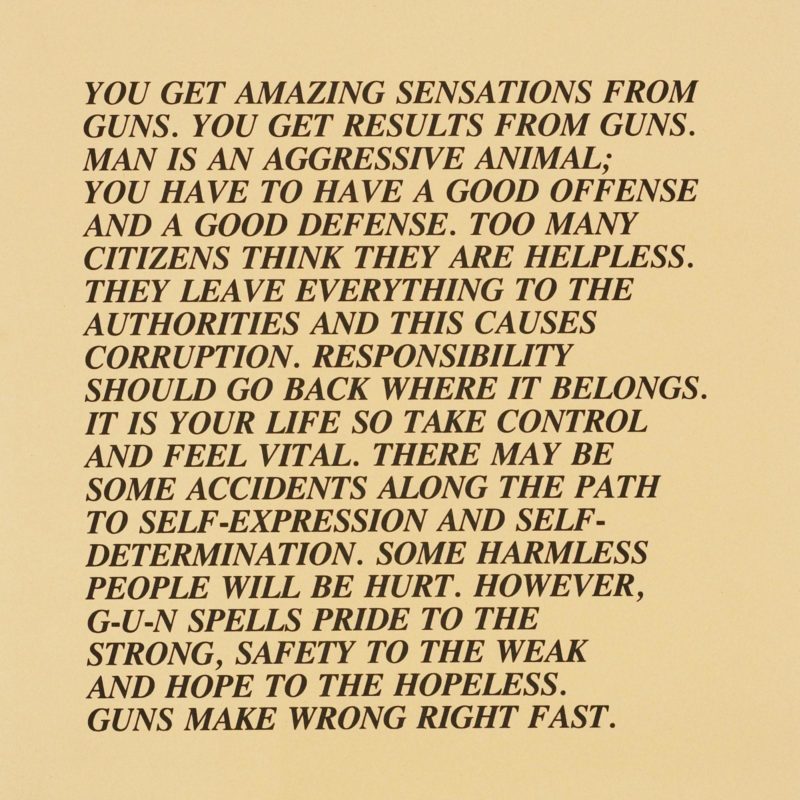
More by Jenny Holzer
Discover more
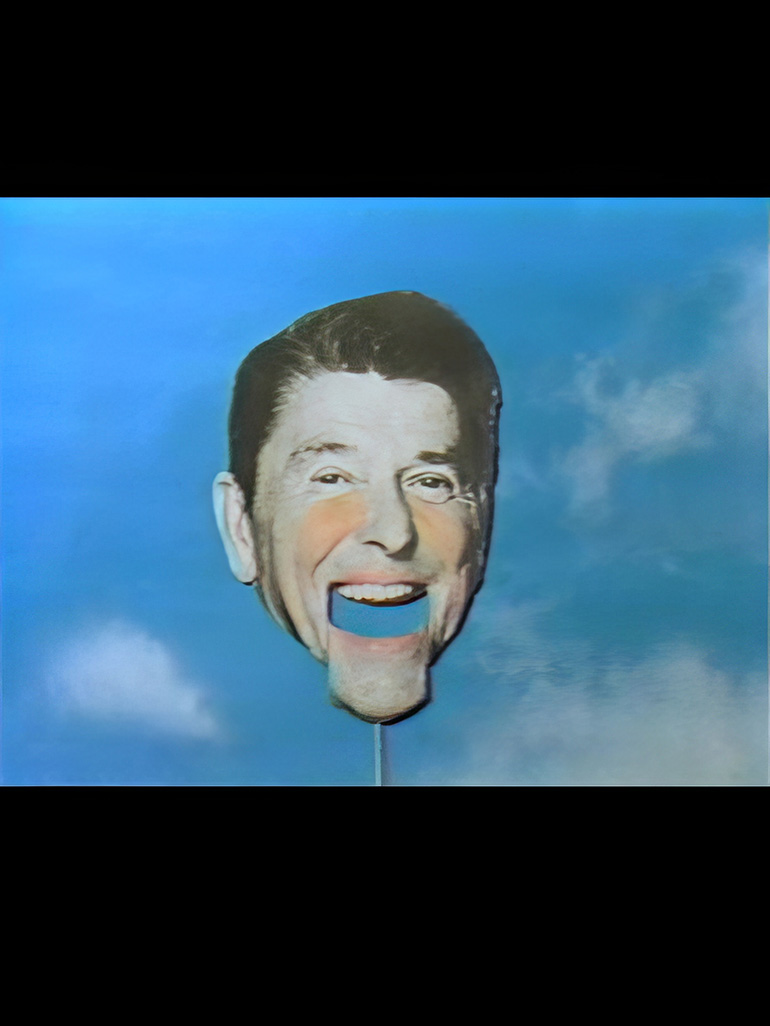
Stay in touch
We would love to keep the conversation going.
Please join us on Instagram , Telegram or YouTube .
Want inspiration in your inbox?
Watch 1,000+ talks, performances, artist profiles, and more.
- Documentation

Jenny Holzer, Artist Inflammatory Essays , 1979–81
Jenny Holzer uses language to interrogate the effects of rhetoric, engaging viewers in fundamental questions such as "Who is speaking?" "Where does this text come from?" and "What does it mean?" Yet her texts—whether directives, confessions, or observations—elide authorial intentionality and unlock a sort of societal subconscious, from which bits of ideology, desire, fear, humor, and hatred pour forth. Holzer has authored dozens of textual series that—while distinct in personality, tone, and subject—often resurface in various material forms over time. Originally presented anonymously on the streets of New York City, the mass-produced short texts that make up Inflammatory Essays cover a variety of subjects that have been ongoing concerns throughout Holzer's career, including power, social control, abuse, consumption, and sex. Declarative and forceful in tone, they embody her distinctively crafted voice, one that is omniscient, detached, and yet enraged, shifting between multiple identities.

${pageClass}

Selections from Truisms, Inflammatory Essays, The Living Series, The Survival Series, Under a Rock, Laments, and Child Text
Choose collection.

Talking Point
Why I Love Jenny Holzer's Inflammatory Essays
Hear our staff talk about their favourite artworks
Here, Jessye Bloomfield shares her views on Jenny Holzer 's lithograph Inflammatory Essays , on display at Tate Modern.
Continue the conversation in the gallery and tell us what you think.
We recommend
Marwan rechmaoui's monument for the living, richard dadd's the flight out of egypt, yayoi kusama's the passing winter.
- Museum Home
- Collections

Recommend keywords
Help us make our collections more accessible by providing keywords to describe this artwork. The BCMA uses the Getty Art & Architecture Thesaurus to provide consistent keywords. Enter a keyword in the field below and you will be prompted with a list of possible matching AAT preferred terms.

Inflammatory Essays
Creation date, object type, creation place, medium and support, credit line, accession number, additional media.

- Contact the Museum
- Rights & Reproductions
Jenny Holzer's 'Nasty' Essays Will Get You Ready For A Revolution
Arts and Culture Reporter, HuffPost
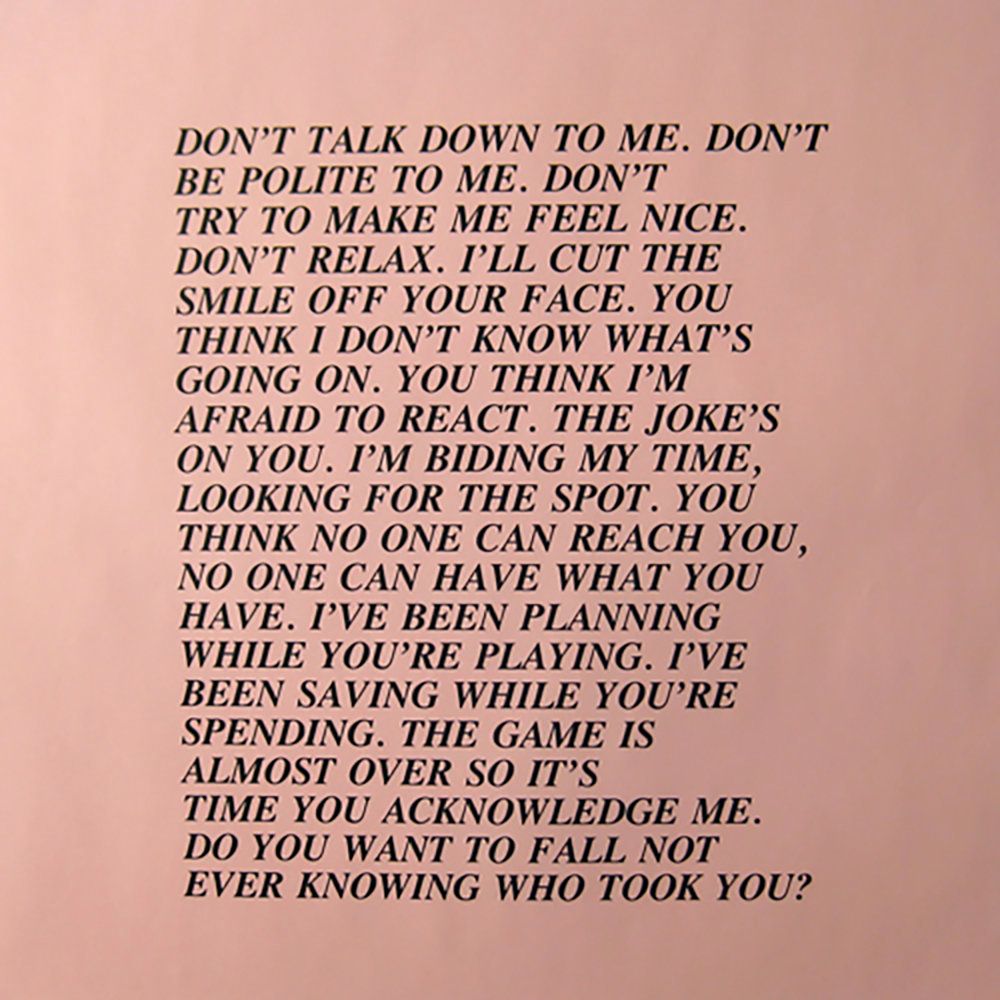
In the late 1970s, when artist Jenny Holzer was a student at the Whitney Museum’s Independent Study Program , she, like many students, wrote essays, which she described in retrospect as “ hot, flaming, nasty things .” Only, unlike the average term paper, Holzer’s treatises bellowed in italicized, capitalized letters on neon sheets of paper, blatantly packed with quotes from Emma Goldman, Mao Zedong, Valerie Solanas, and Adolf Hitler.
These papers, dubbed “Inflammatory Essays, ” followed a familiar recipe. Each featured 100 words divided onto 30 lines and adopted an unusual voice ― somewhere between a batty dictator, a leftist activist and a sage prophet. They read like a religious zealot warning a nonplussed college campus about the impending apocalypse ― or, quite eerily, like our new president tweeting quasi-nonsense into the abyss.
“FEAR IS THE MOST ELEGANT WEAPON,” one of Holzer’s essays reads. “ FORCE ANXIETY TO EXCRUCIATING LEVELS OR GENTLY UNDERMINE THE PUBLIC CONFIDENCE, CONFLICT OF INTEREST MUST BE SEEN FOR WHAT IT IS.”
Holzer took her essays to the streets, wheat pasting the multicolored creeds all around Times Square under the cloak of night. Part conceptual art, part street art, the “Inflammatory Essays” were a new breed of text-based work. Impassioned verses removed from sincerity or fact, they served to rile up the viewer and set her loose without direction, like a child spun madly before a round of Pin the Tail on the Donkey.
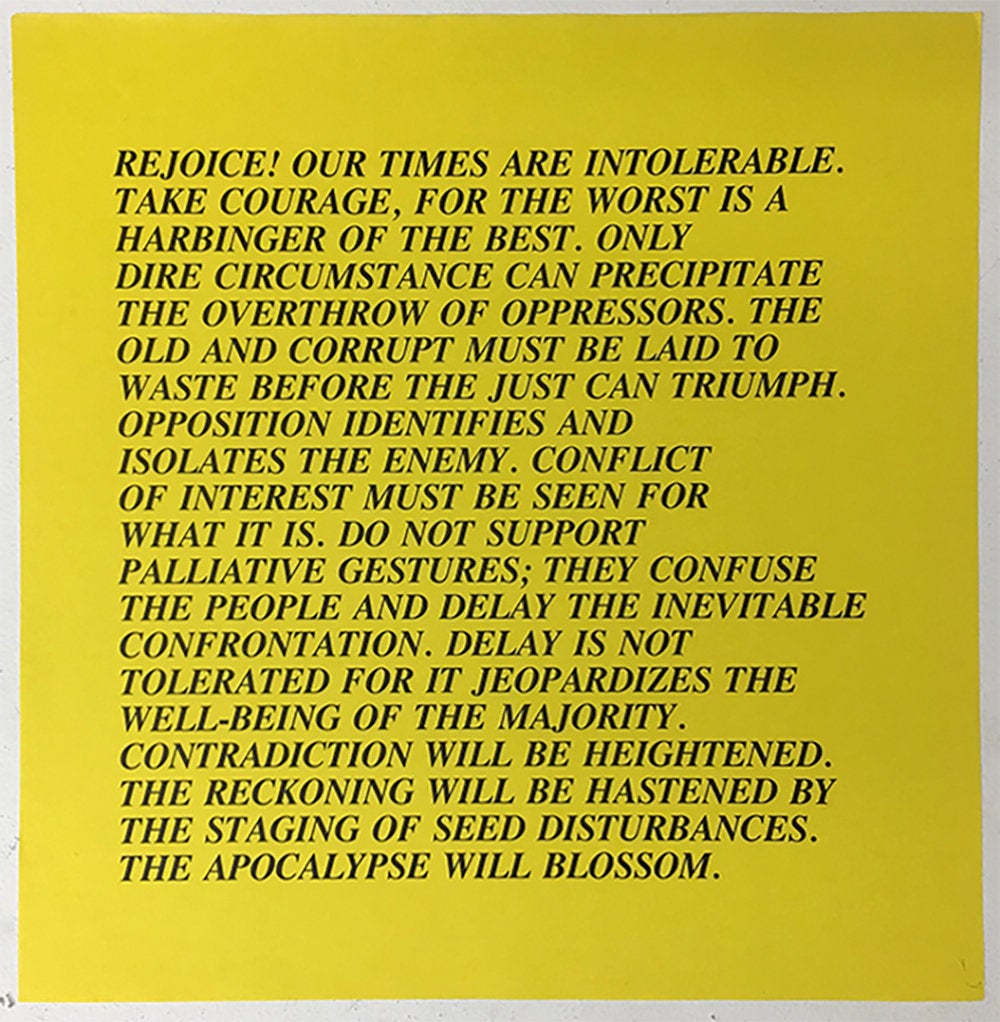
Todd Alden, the director of the Lower East Side gallery Alden Projects, began collecting Holzer’s essays in the early ‘80s. They were available for cheap, 10 for $10 at Printed Matter, according to The New York Times. Alden acquired 100 of them over the next few years, not knowing just how prescient the distributed posters would become.
The day after the 2016 election, Alden looked at one of Holzer’s posters hanging on his wall and knew he had to curate a show around them. There was something so contemporary about the essays’ jumble of political ideologies, unchecked and gung-ho, secreting without consequence.
As Alden explained in an email to The Huffington Post, Holzer’s essays “were written under the different historical conditions of the nascent Reagan era, but nevertheless, these street posters, vital as ever, read today, as a nearly pitch-perfect responses to our own inflammatory times. They draw on, and combine extreme, manifesto-like rhetoric of both right and left but which Holzer strategically distills into her own writing in an anonymous voice.”
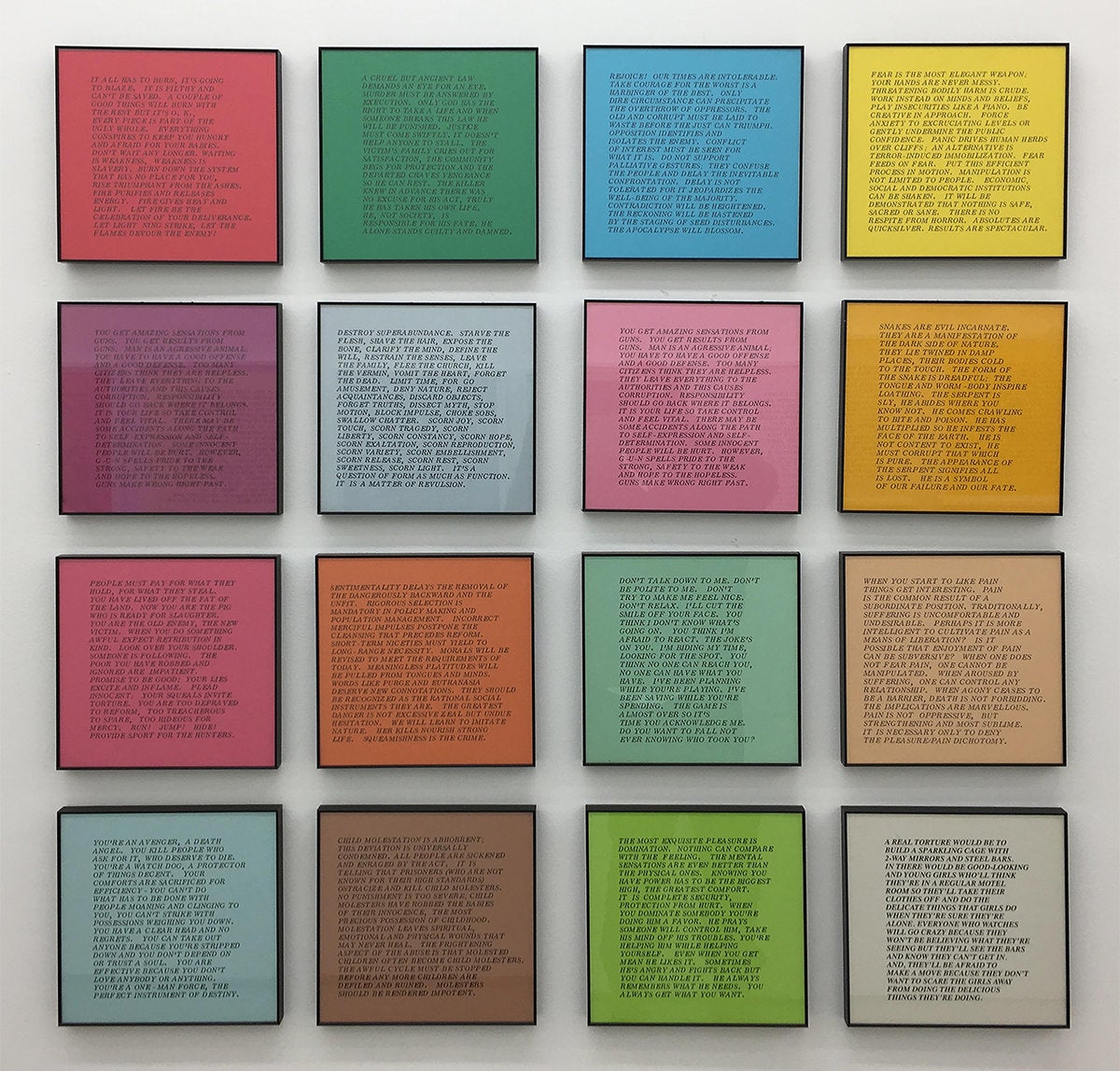
In a time when fake news and “ alternative facts ” infiltrate the media landscape, and even the White House, Holzer’s shapeshifting and evocative words are as relevant as ever. “ It’s an important time for people to examine what’s implicit in Holzer’s project, ” Alden explained to The New York Times. “Questioning the way ‘the truth’ is generated, questioning the whole premise of Enlightenment culture, which is that if everyone reads, the culture will inevitably improve.”
And so Alden curated a show around Holzer’s essays, dating from 1977 to 1982. Given the public nature of the works, he didn’t seek permission from either Holzer or her gallery, and the artist has no intention of intervening. The show is called “ REJOICE! OUR TIMES ARE INTOLERABLE : Jenny Holzer’s Street Posters,” taking its title from one of the artist’s most well-known essays.
The spookily poignant piece continues: “ TAKE COURAGE, FOR THE WORST IS A HARBINGER OF THE BEST, ONLY DIRE CIRCUMSTANCE CAN PRECIPITATE THE OVERTHROW OF OPPRESSORS .” It ends: “ THE APOCALYPSE WILL BLOSSOM.”
Alden, for one, hopes Holzer’s works serve as an inspiration for the countless individuals who want to resist President Donald Trump ’s ideologies and decrees. Holzer was, after all, only an art student when she took to the streets with a bunch of neon papers. “ I’m hoping that people will see this as a model for political activism ,” Alden said to Vogue, “and as a model for speaking out, both about our media culture today and our political situation.”
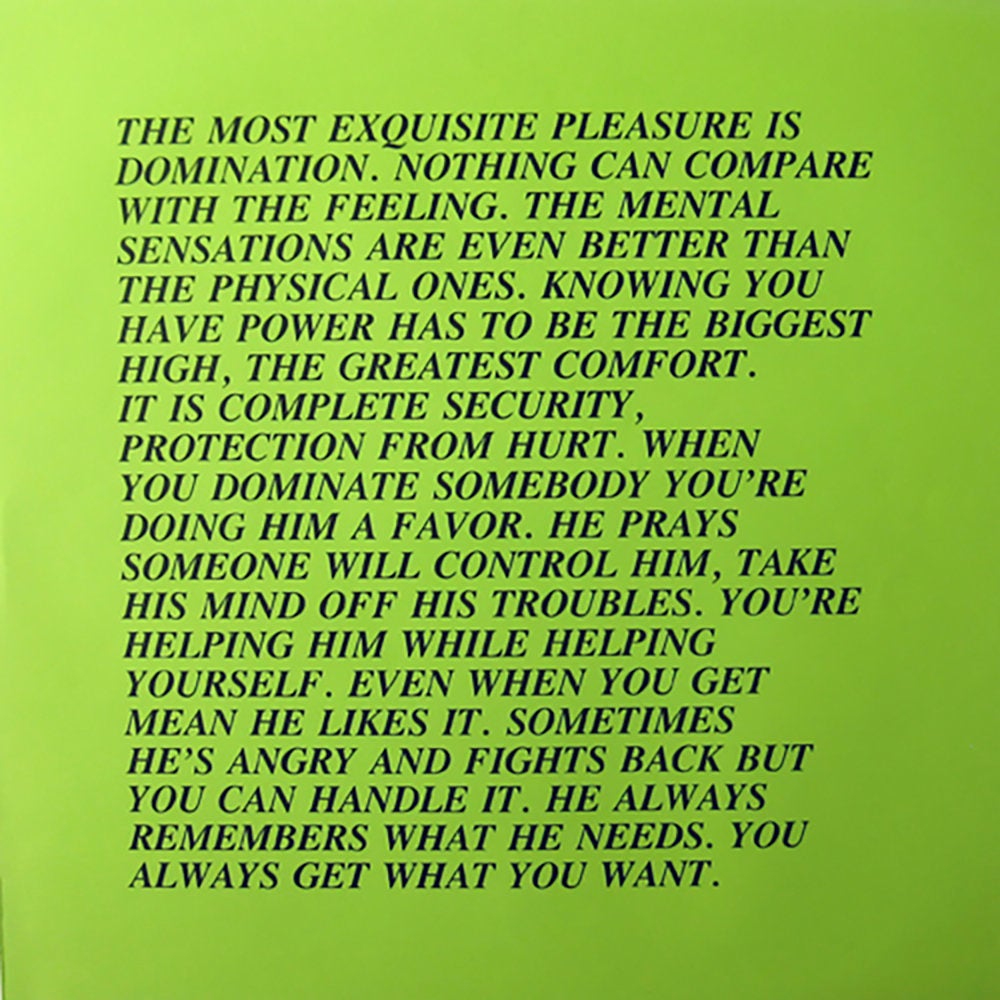
“ REJOICE! OUR TIMES ARE INTOLERABLE: Jenny Holzer’s Street Posters, 1977-1982 ” runs until Feb. 12 at Alden Projects in New York. The posters will also be on view at Art Los Angeles Contemporary from Jan. 26-29.
Support HuffPost
Our 2024 coverage needs you, your loyalty means the world to us.
At HuffPost, we believe that everyone needs high-quality journalism, but we understand that not everyone can afford to pay for expensive news subscriptions. That is why we are committed to providing deeply reported, carefully fact-checked news that is freely accessible to everyone.
Whether you come to HuffPost for updates on the 2024 presidential race, hard-hitting investigations into critical issues facing our country today, or trending stories that make you laugh, we appreciate you. The truth is, news costs money to produce, and we are proud that we have never put our stories behind an expensive paywall.
Would you join us to help keep our stories free for all? Your contribution of as little as $2 will go a long way.
Can't afford to donate? Support HuffPost by creating a free account and log in while you read.
As Americans head to the polls in 2024, the very future of our country is at stake. At HuffPost, we believe that a free press is critical to creating well-informed voters. That's why our journalism is free for everyone, even though other newsrooms retreat behind expensive paywalls.
Our journalists will continue to cover the twists and turns during this historic presidential election. With your help, we'll bring you hard-hitting investigations, well-researched analysis and timely takes you can't find elsewhere. Reporting in this current political climate is a responsibility we do not take lightly, and we thank you for your support.
Contribute as little as $2 to keep our news free for all.
Dear HuffPost Reader
Thank you for your past contribution to HuffPost. We are sincerely grateful for readers like you who help us ensure that we can keep our journalism free for everyone.
The stakes are high this year, and our 2024 coverage could use continued support. Would you consider becoming a regular HuffPost contributor?
The stakes are high this year, and our 2024 coverage could use continued support. If circumstances have changed since you last contributed, we hope you’ll consider contributing to HuffPost once more.
Already contributed? Log in to hide these messages.
Before You Go
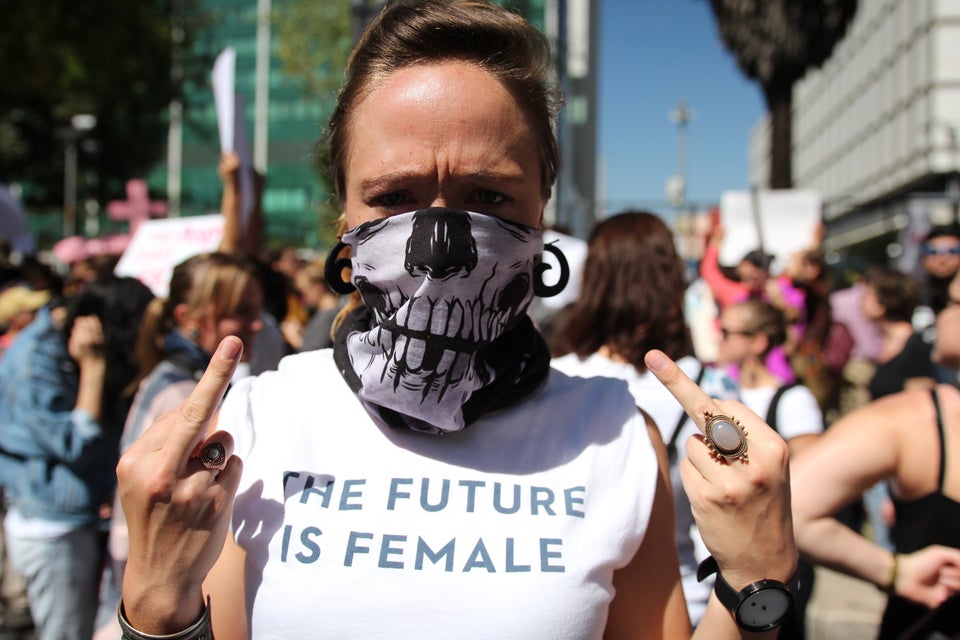
38 Stunning Photos From Women's Marches Around The World
Popular in the community, from our partner, more in culture & arts.

460. JENNY HOLZER | INFLAMMATORY ESSAYS
Contemporary Art Online | New York

JENNY HOLZER | INFLAMMATORY ESSAYS
March 10, 05:00 PM GMT
2,000 - 3,000 USD
Lot Details
Description
JENNY HOLZER
INFLAMMATORY ESSAYS
signed on the packing tube
21 offset prints on colored paper
Each sheet: 17 by 16⅞ in. (43.2 by 42.8 cm.)
Executed in 1979-82.
Condition report
Barbara Gladstone Gallery, New York
Acquired from the above by the present owner in March 1989
See all hours
- Tue–Wed Closed
- Fri–Sun 11–5
- The first hour of every day, 10–11 a.m., is reserved for member-only viewing.
Untitled (Rejoice!), from Inflammatory Essays
Image actions.
- Show this image
Currently Off View
- Prints and Drawings
Jenny Holzer American, b. 1950
About this artwork
Date dates are not always precisely known, but the art institute strives to present this information as consistently and legibly as possible. dates may be represented as a range that spans decades, centuries, dynasties, or periods and may include qualifiers such as c. (circa) or bce., credit line, reference number, extended information about this artwork.
Object information is a work in progress and may be updated as new research findings emerge. To help improve this record, please email . Information about image downloads and licensing is available here .
Explore Further
Sign up for our enewsletter to receive updates..
- News and Exhibitions Career Opportunities Families
- Public Programs K-12 Educator Resources Teen Opportunities Research, Publishing, and Conservation
Gallery actions
Suggested terms.
- Free Admission
- My Museum Tour
- What to See in an Hour
National Endowment for the Arts
- Grants for Arts Projects
- Challenge America
- Research Awards
- Partnership Agreement Grants
- Creative Writing
- Translation Projects
- Volunteer to be an NEA Panelist
- Manage Your Award
- Recent Grants
- Arts & Human Development Task Force
- Arts Education Partnership
- Blue Star Museums
- Citizens' Institute on Rural Design
- Creative Forces: NEA Military Healing Arts Network
- GSA's Art in Architecture
- Independent Film & Media Arts Field-Building Initiative
- Interagency Working Group on Arts, Health, & Civic Infrastructure
- International
- Mayors' Institute on City Design
- Musical Theater Songwriting Challenge
- National Folklife Network
- NEA Big Read
- NEA Research Labs
- Poetry Out Loud
- Save America's Treasures
- Shakespeare in American Communities
- Sound Health Network
- United We Stand
- American Artscape Magazine
- NEA Art Works Podcast
- National Endowment for the Arts Blog
- States and Regions
- Accessibility
- Arts & Artifacts Indemnity Program
- Arts and Health
- Arts Education
- Creative Placemaking
- Equity Action Plan
- Historically Black Colleges and Universities (HBCUs)
- Literary Arts
- Native Arts and Culture
- NEA Jazz Masters Fellowships
- National Heritage Fellowships
- National Medal of Arts
- Press Releases
- Upcoming Events
- NEA Chair's Page
- Leadership and Staff
- What Is the NEA
- Publications
- National Endowment for the Arts on COVID-19
- Open Government
- Freedom of Information Act (FOIA)
- Office of the Inspector General
- Civil Rights Office
- Appropriations History
- Make a Donation
Art Talk with Poet Nathalie Handal
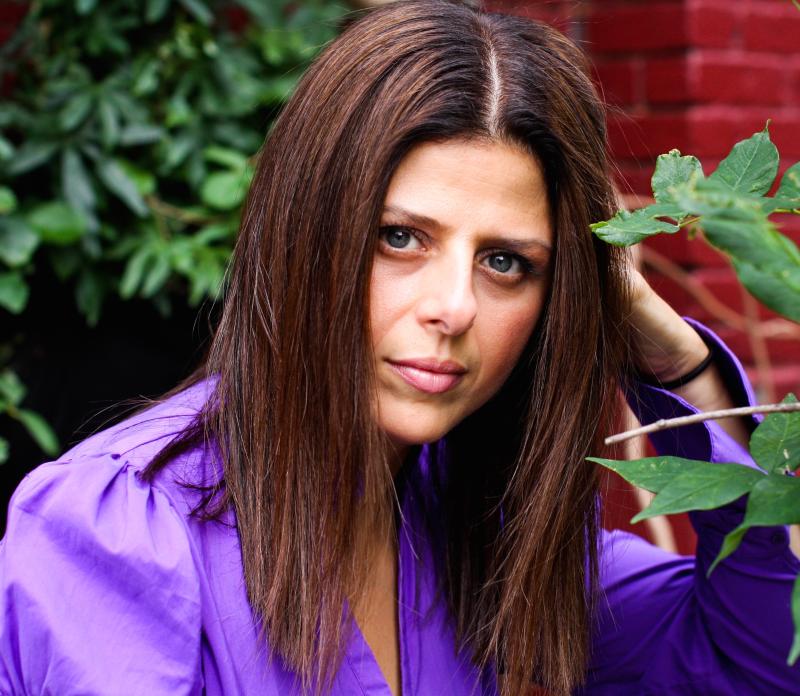
Poet, travel writer, and playwright Nathalie Handal. Photo by Blair Prentice
“The world is the street I grew up on.”
Poet, travel writer, and playwright Nathalie Handal was raised and educated all over the world — Latin America, the Middle East, Europe, Asia, and the United States. She still considers herself tri-continental, and her work is global in nature. She writes the literary travel column “The City and the Writer” for Words Without Borders ; she is a literature and creative writing professor at New York University Abu Dhabi; and she is the author of ten award-winning poetry collections, which have been translated into 15 languages.
In addition to her poetry, Handal has written eight plays and is the editor of The Poetry of Arab Women: A Contemporary Anthology , a collection of poetry from 83 Arab women poets. In the interview below, Handal discusses this groundbreaking collection, how it came into being, and the impact her multicultural upbringing has made on her creative process.
National Endowment for the Arts: When did you begin writing, and when did you first consider yourself a writer?
Nathalie Handal: My mother told me I’ve always been a storyteller. The mystifying nature of language captivated my curious mind as child. Poetry comes from what I don’t know, or know most deeply.
I feel whole when I write so I’ve always considered myself a writer and have never stopped desiring the ways imagination dares me to explore freedom. Only when my first poems appeared in the British magazine Ambit , chosen by John Burnside, and then when Lucille Clifton was teaching me how to put a poetry book together, did I attain a clear view of myself as a writer in the world.
NEA: Has your global upbringing and education influenced your work? How so?
Handal: The world is the street I grew up on. It taught me to listen, to walk towards connections rather than get lost in division. It taught me courage. Courage is everything you cannot see in a literary work.
I live a tri-continental life. This globality informs my writing and creative research, and helps me imagine poems, stories, and a tomorrow that is ethical, empathetic, expansive.
In the Caribbean and Latin America, I became aware of the diversity of the Americas as well as the movements of the Levantine diaspora. In Europe, I discovered an East and a West, a North and a South, and the many post-colonial and the many migrant communities from Africa, Asia, and the Middle East. In Asia and the Middle East, I constantly crossed vast cultures and languages, while many fixated on a narrow vision of the region. In the United States, I saw the communities of the world through the hyphen. An existential question about the nation lives in the politics of the hyphen.
In New York City, I understood that though I am made of many global cities and seas, only in New York, I find the street I grew up on.
NEA: Do your different writing practices—poetry, travel writing, and playwrighting—influence one another? How so?
Handal: They inform each other, exist within each other. They show me writing can make anything. I am a poet in prose; a storyteller in poems; a traveler in every word.
NEA: What distinguishes those practices for you?
Handal: Poetry taught me the art of silence. Travel writing the art of stillness. Playwriting the art of life.
NEA: What led you to edit The Poetry of Arab Women: A Contemporary Anthology ?
Handal: With less than three percent of literature in translation and having an international background, I felt a responsibility to participate in translation projects and the dissipation of global literature. Literature is dialogue, and I’ve always wanted to be part of the conversation as a writer and a literary activist.
When I started The Poetry of Arab Women , I wasn’t aware of the colossal work it required. I wanted to eradicate the invisibility of Arab women poetry and introduce the diversity of their works. It was fundamental to unite Arab women poets regardless of where they were born, live, or what language they write in, as well as write a substantial introduction on Arab women’s literature and highlight the particularities of every Arab country. The introduction maps feminist movements and literary scenes, poetic commonalities and differences, as well as their varied socio-political contexts.
NEA: What was the experience of putting this anthology together like? Where did you begin?
Handal: It began in Paris where I was constantly at the Institut du monde arabe (Arab World Institute); as well as being inspired by the pioneering work and mentorship of Salma Khadra Jayyusi, founder and director of Project of Translation from Arabic (PROTA), a groundbreaking space for the translation of Arabic literature into English.
Editing an anthology is not for those who lack fortitude or are faint-hearted. You have to embody the planner and the architect, the artisan and the painter. Every detail is monumental.
NEA: The anthology showcases 83 poets. Are there any that didn’t make it into the book that you would also like readers to know about?
They can be found in the W.W. Norton anthology I co-edited, Language for a New Century: Contemporary Poetry from the Middle East, Asia, and Beyond . The book includes 450 poets from 61 countries writing in over 40 different languages, grouped thematically into nine sections that work against normative taxonomy. A conversation threaded across the continents.
But so much continues to change at a faster pace. When I started, I was working via mail and fax. Now we can get an answer in an instant. It is a different literary landscape at all levels.
NEA: You are the author of eight poetry collections, is there one that is a favorite of yours or you hold particularly close to your heart? Why?
Handal: Every book is a voyage. Every voyage a return to the same place and to an unexpected elsewhere. Every book reminds me what makes loss bearable is that love is there too.
The book I am working on is usually the one closest to my heart.
NEA: Is there anything else you want to say about writing?
Handal: Writing is pleasure and pain because we have to stay open to all that’s inside.
Places and people never die for a writer. Yet we still find ourselves in a strange condition — trying to reassure ourselves of what once existed. And sometimes, we fear confronting our nostalgia, the crevices of our heart. But truth is essential. The lie never leaves.
Like history, we end up having to address it, atone.
Recent Blog Posts
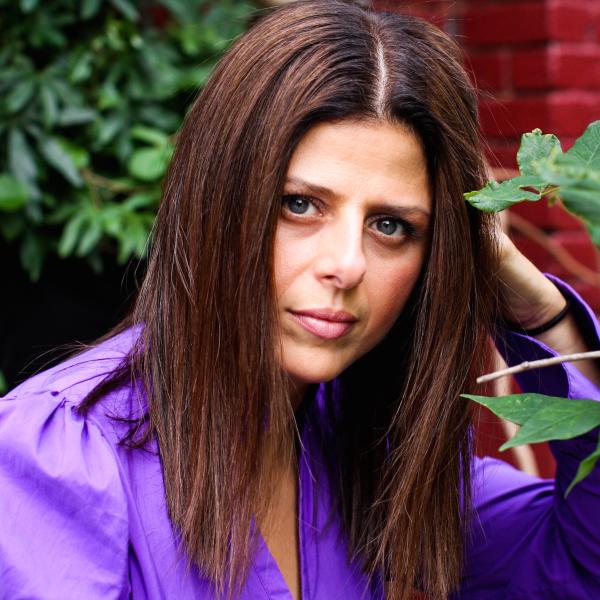
Unveiling the Legacy of Hazel Scott: A Conversation with Filmmaker Nicole London
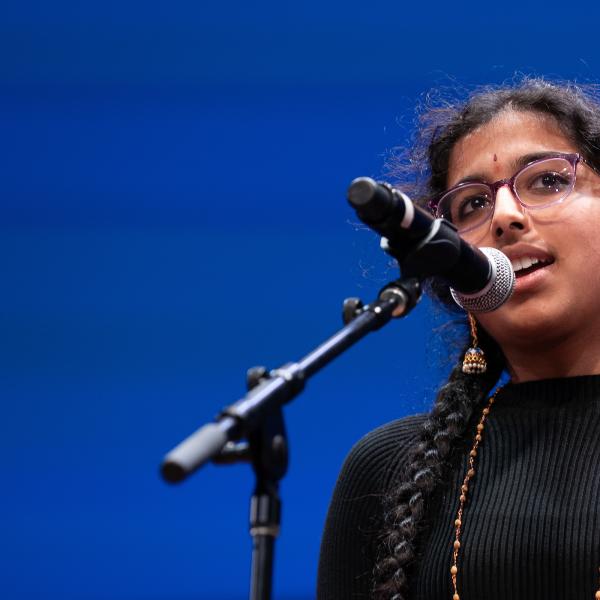
Flashback Friday: Reflections From Poetry Out Loud National Champions
Stay connected to the national endowment for the arts.
- Hispanoamérica
- Work at ArchDaily
- Terms of Use
- Privacy Policy
- Cookie Policy
8 Projects that Exemplify Moscow's Urban Movement

- Written by Marie Chatel
- Published on July 27, 2016
When it comes to urbanism these days, people’s attention is increasingly turning to Moscow . The city clearly intends to become one of the world’s leading megacities in the near future and is employing all necessary means to achieve its goal, with the city government showing itself to be very willing to invest in important urban developments (though not without some criticism ).
A key player in this plan has been the Moscow Urban Forum . Although the forum’s stated goal is to find adequate designs for future megacities, a major positive side-effect is that it enables the city to organize the best competitions, select the best designers, and build the best urban spaces to promote the city of Moscow. The Forum also publishes research and academic documents to inform Moscow’s future endeavors; for example, Archaeology of the Periphery , a publication inspired by the 2013 forum and released in 2014, notably influenced the urban development on the outskirts of Moscow, but also highlighted the importance of combining urban development with the existing landscape.

Concluding earlier this month, the 2016 edition of the Moscow Urban Forum focused on smart cities and the impact of technology on the ways we interact with people and use public infrastructure and civic spaces. The 2016 Forum invited city officials, urbanists, and architectural practitioners – including Yuri Grigoryan from Project MEGANOM ; Pei Zhu from Studio Pei Zhu ; Hani Rashid from Asymptote ; Reinier de Graaf from OMA ; Yosuke Hayano from MAD Architects ; and Kengo Kuma from Kengo Kuma Architects – to share about their knowledge and experiences in urban design. With the city looking forward to the built results of the latest Forum, we take a look back at some of the major developments in Moscow that have emerged in the past five years.
1) Gorky Park and Garage Museum

In 2010 the city government decided to improve Muscovites’ urban environment and create public spaces, and Gorky Park was the first project of note. The Russian equivalent of Central Park, it used to attract masses of tourists to its amusement park, but no residents would spend time there. Its reconstruction began in 2011 and featured infrastructure for strolling, sport, work, culture and leisure.
Inside the park lies the Garage Museum of Contemporary Art , a landmark building from the Brezhnev communist era which was renovated and transformed by OMA in 2015. The Dutch firm kept the original structure “as found,” only repairing elements from its prefabricated concrete walls – often clad with brick and decorative green tiles. Instead, the redesign focused on a double-skin facade of polycarbonate plastic that enclosed the original structure and preserved it from decay.

2) Zaryadye Park, Diller Scofidio + Renfro

Due to open in 2018, Zaryadye Park designed by Diller Scofidio + Renfro is probably one of Moscow ’s most cutting-edge projects. Located next to the Kremlin, the Red Square, and St Basil’s Cathedral, the project embodies what the architects calls “Wild Urbanism.” The project notably includes four artificial microclimates that mimic Russian landscape typologies: the steppe, the forest, the wetland and tundra. “It is a park for Russia made from Russia,” as Charles Renfro explains , in that “it samples the natures of Russia and merges them with the city, to become a design that could only happen here. It embodies a wild urbanism, a place where architecture and landscape are one.”

3) Moscow Riverfront, Project Meganom

Russian firm Project Meganom has also designed an ambitious project for Moscow ’s riverfront. Their masterplan also aims for a dialogue between the built and natural environment. A series of linear green spaces follow the river, and lines for pedestrians, cyclists, cars, and public transport are clearly delineated, improving the use of the public squares. River embankments are also transformed to function as areas for activities, communication, education and creativity nodes for public gathering.

4) Krymskaya Embankment, Wowhaus Architecture Bureau

Wowhaus Architecture Bureau recently transformed the 4-lane road at Krymskaya Embankment into a landscape park that connects Gorky Park with Krymsky bridge. The area used to be deserted, but is now reactivated with distinct transit and sport zones, as well as pavilions for artists’ exhibitions. Wave-shaped bicycle ramps, paths, and benches feature on the artificial landscape, which is also used for sledding, skiing, and skating in the winter.

5) Hermitage Museum and ZiL Tower in Moscow, Asymptote Architecture

New York architectural firm Asymptote Architecture are currently building two projects, a 150-meter residential tower and a satellite facility for St Petersburg’s well-known Hermitage Museum , where modern and contemporary art collections will be displayed. Situated in one of Moscow ’s oldest industrial areas, Asymptote’s buildings will lie in place of a Constructivist factory – which explains why the museum was reportedly inspired by El Lissitzky's "Proun" painting, as the terrace interior clearly shows.

6) “My Street”

“My Street” is the largest-scale program led by Moscow ’s government. The project aims to create about 50 kilometers of new pedestrian zones within the city center and periphery. The extensive program aims to solve parking issues, renovate street facades, and repair sidewalks and walkways with delimited areas for public transports, cars, cyclists, and pedestrians. “My Street” also requires a strong governance strategy and coordination; led by the Strelka Institute’s consultation arm KB Strelka , the project also involves 17 Russian and foreign architecture practices that were all individually in charge of one street, square or group of streets. Notable architects include the German firm Topotek 1 , the Dutch group West 8 , and the Russian firm Tsimailo , Lyashenko and Partners.

7) Moscow Metro

Moscow Metro is an architectural masterpiece that has been elaborated on since the 1920s. Its stations from the Stalin era are known for their unique designs with high ceilings, elaborate chandeliers and fine granite and marble cladding. To ensure that Moscow Metro remains an emblem of the city’s urban culture and powerful transportation system, the city’s government organized various competitions for the renovation of some Metro stations. Russian-based practice Nefa Architects was chosen to redesign Moscow’s Solntsevo Metro Station, while Latvian firm U-R-A will transform Novoperedelkino Subway Station . New stations are also being built, including two stations by Russian firms Timur Bashkayev Architectural Bureau and Buromoscow which should be completed by the end of 2018.
.jpg?1469536252)
8) Luzhniki Stadium

Luzhniki Stadium is Moscow ’s main venue for sporting and cultural events. With Russia hosting the 2018 FIFA World Cup , the stadium should reflect Moscow’s intent to become a leading megacity, which is why $540 million has been spent on construction works. Its renovation mainly focuses on the roof and seating areas, and the capacity is planned to increase up to 81,000 seats. Works will be completed by 2017.
Find out more information and talks on Moscow’s urban development and the future of megacities on Moscow Urban Forum’s YouTube channel .

- Sustainability
世界上最受欢迎的建筑网站现已推出你的母语版本!
想浏览archdaily中国吗, you've started following your first account, did you know.
You'll now receive updates based on what you follow! Personalize your stream and start following your favorite authors, offices and users.

IMAGES
VIDEO
COMMENTS
Over the years Holzer developed longer texts, such as the Inflammatory Essays (1979-82), a series of texts of one hundred words each, written in a more caustic and aggressive language than the earlier work. Printed on coloured paper, they create a very visual discursive mosaic. As the title suggests, they are 'inflammatory essays' on intolerance, violence, rampant consumerism, the ...
Just six years prior, Seattle Art Museum's Contemporary Art Council sponsored the installation of Essays along a wall at Second Avenue and Pike Street in 1984. ... Inflammatory Essays feels eerily contemporary. In a polarized era marred by fake news, the quick dismissal of credible journalism, and our self-imposed curation of media, Holzer ...
In a recent article in Art in America, Leah Pires observes that Trump's speeches "bear an uncanny resemblance to the freewheeling incoherence" of the "Inflammatory Essays." "Frequently pairing affirmations with denials, advocacy with dismissal," Holzer's work, Pires argues, can be read as a postmodern precursor to the president's doublespeak, which "can be difficult to ...
Jenny Holzer - Inflammatory Essays, 1979-1981, installation view at the Hammer Museum, Los Angeles, photo: Brian Forrest The reaction of the public. Motivated by the need to include discernible content in her work rather than abstract content, Holzer started placing words in her pieces, typically in the form of scraps of newspapers, as well as book and magazine clippings.
Apr 14, 2020 5:00AM. Jenny Holzer. Inflammatory Essays: 25 works, circa 1979-82. Phillips. Bidding closed. Elephant and Artsy have come together to present This Artwork Changed My Life, a creative collaboration that shares the stories of life-changing encounters with art. A new piece will be published every two weeks on both Elephant and Artsy.
'Inflammatory Essays', Jenny Holzer, 1979-82 'Inflammatory Essays', Jenny Holzer, 1979-82. Skip navigation Shop. Become a Member. Main menu. Art and artists. Our collection ... Make art Create like an artist Kids art activities Tate Draw game; What's on; Plan your visit; Main menu additional. Shop; Become a Member; Expand. Art and ...
HAMMER MUSEUM Free for good 10899 Wilshire Blvd. Los Angeles, CA 90024 (310) 443-7000 [email protected]
See all 62 artworks ›. Blue Tilt, 2004. Jenny Holzer. Untitled (Fear is the Most Elegant Weapon…), from Inflammatory Essays, 1979/82. Jenny Holzer. Untitled (Don't Talk Down to Me), from Inflammatory Essays, 1979/82. Jenny Holzer. Plate, from Truisms, 1977-79.
Selections from Truisms, Inflammatory Essays, The Living Series, The Survival Series, Under a Rock, Laments, and Child Text. ... Collections Contemporary Art, Americas. Classifications Electronic media. In 1977 Holzer created Truisms, her first all-text compositions. She typed "one-liners," had them printed commercially, and pasted them up as ...
Hear our staff talk about their favourite artworks. Here, Jessye Bloomfield shares her views on Jenny Holzer 's lithograph Inflammatory Essays, on display at Tate Modern. Continue the conversation in the gallery and tell us what you think.
For each"Inflammatory Essay," Holzer followed a strict formula, limiting each text to 100 words, formatted in capital, italicized letters, divided into 20 lines, and printed on colorful square paper. ... Carolina Nitsch Contemporary Art. US$35,000. Bid (in progress) Jenny Holzer. Inflammatory Essays: 10 plates, 1979-82. Phillips. $2,400 ...
20 Inflammatory Essays, 1979-1982 Medium: Prints and multiples, Set of 20 offset posters on colored paper Size: 17 x 17 in. (43.2 x 43.2 cm.) ... Price on Request. Movement: Contemporary Art, Feminist Art Markings: Signed on one sheet, on reverse Exhibitions: 05/04/2020-06/13/2020 Jenny Holzer: Text Works Contact Gallery About This Work
Conceived in 1979, Inflammatory Essays convey dogma, extremism, and fanaticism. An homage to the creative and destructive capacity of the manifesto, the "essays" are in fact short and standardized: 100-word paragraphs of twenty lines each, printed in the same font on colorful paper. ... Institute of Contemporary Art, Boston Additional Media ...
Part conceptual art, part street art, the "Inflammatory Essays" were a new breed of text-based work. Impassioned verses removed from sincerity or fact, they served to rile up the viewer and set her loose without direction, like a child spun madly before a round of Pin the Tail on the Donkey. ... There was something so contemporary about the ...
Contemporary Art Online | New York / Lot 460. Lot 460. Contemporary Art Online | New York. Contemporary Art Online | New York / Lot 460. Lot 460. ... JENNY HOLZER b.1950 INFLAMMATORY ESSAYS signed on the packing tube 21 offset prints on colored paper . Auctions. Upcoming Auctions. Auction Results. Sotheby's Metaverse. Sotheby's Sealed. NBA ...
Untitled (Rejoice!), from Inflammatory Essays Place United States (Artist's nationality:) Date Dates are not always precisely known, but the Art Institute strives to present this information as consistently and legibly as possible. Dates may be represented as a range that spans decades, centuries, dynasties, or periods and may include ...
Jenny Holzer (American, b. 1950) Inflammatory Essays, 1979-1982; Ten offset lithographs on multi-colored paper (framed separately); 16 1/4 JENNY HOLZER, Inflammatory Essays | Ragoarts.com 652: JENNY HOLZER, Inflammatory Essays < Post War + Contemporary Art, 6 May 2017 < Auctions | Rago Auctions
Inspired by African and Iberian art, he also contributed to the rise of Surrealism and Expressionism. Picasso's sizable oeuvre grew to include over 20,000 paintings, prints, drawings, sculptures,ceramics, theater sets, and costume designs. He painted his most famous work, Guernica (1937), in response to the Spanish Civil War; the totemic ...
First Moscow Biennale of Contemporary Art. The First Moscow Biennale of Contemporary Art (January 28 - February 28, 2005) caused great response both in Russia and abroad. The main exhibition "Dialectics of Hope" included projects by 41 artists from 22 countries and represented art that focuses on one of the most fundamental experiences of ...
The long-awaited new arts center dazzled everyone who entered. On Saturday Moscow celebrated the grand opening of the GES-2 House of Culture. Headed by curator Teresa Iarocci Mavica and funded by ...
They can be found in the W.W. Norton anthology I co-edited, Language for a New Century: Contemporary Poetry from the Middle East, Asia, and Beyond. The book includes 450 poets from 61 countries writing in over 40 different languages, grouped thematically into nine sections that work against normative taxonomy.
Artist Name. Artwork Title. Partner. Price. Available for sale from Carolina Nitsch Contemporary Art, Jenny Holzer, Inflammatory Essays (1979-82), Complete suite of 29 offset posters on colored paper….
2) Zaryadye Park, Diller Scofidio + Renfro. Due to open in 2018, Zaryadye Park designed by Diller Scofidio + Renfro is probably one of Moscow 's most cutting-edge projects. Located next to the ...